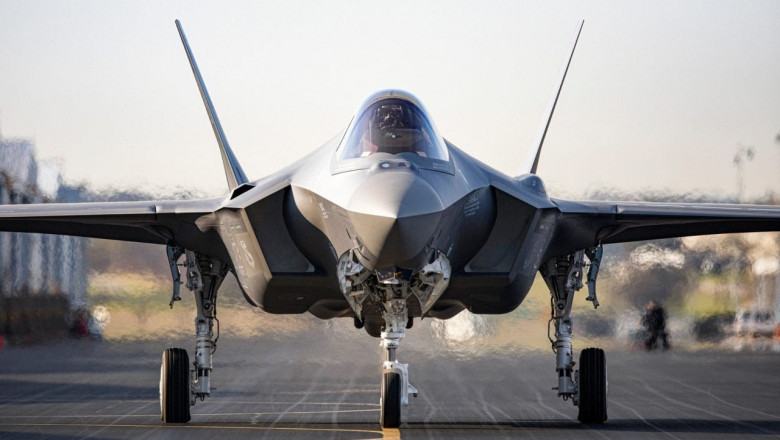views

The F-35 Lightning II is not just an aircraft—it's a cutting-edge flying computer. Designed by Lockheed Martin, the F-35 represents the pinnacle of stealth, speed, and sensor fusion. But what exactly makes this fifth-generation jet so advanced? In this blog, we'll answer the question: "Which technology is used in the F-35?" and explore how it sets the aircraft apart on the global stage.
✈️ What Is the F-35?
The F-35 Lightning II is a family of stealth multirole fighters developed for air superiority, ground attack, and reconnaissance. There are three variants:
-
F-35A (Conventional Takeoff and Landing)
-
F-35B (Short Takeoff and Vertical Landing)
-
F-35C (Carrier-based operations)
🔍 Which Technology Is Used in the F-35?
Here’s a breakdown of the core technologies that power this state-of-the-art fighter jet:
1. Stealth Technology
The F-35 uses radar-absorbent materials (RAM) and a shape optimized to reduce radar cross-section. This gives it a low observable profile, making it nearly invisible to enemy radar systems.
2. Sensor Fusion
One of the F-35's standout features is sensor fusion—combining data from multiple onboard and external sensors into a single, real-time picture. This gives pilots unmatched situational awareness and helps them detect, track, and engage targets with extreme precision.
3. Distributed Aperture System (DAS)
The AN/AAQ-37 DAS is a network of six infrared cameras mounted around the aircraft. It gives pilots full 360-degree coverage and real-time imagery of the battlespace—even allowing them to “see through” the plane using helmet-mounted displays.
4. Active Electronically Scanned Array (AESA) Radar
The AN/APG-81 radar, developed by Northrop Grumman, is an AESA radar that can track multiple targets at once, perform electronic warfare functions, and map ground terrain with incredible resolution.
5. Helmet-Mounted Display System (HMDS)
Forget cockpit screens—the pilot’s helmet is the screen. The F-35's HMDS projects flight data, targeting info, and even night vision right onto the pilot’s visor, making traditional heads-up displays obsolete.
6. Electronic Warfare Suite
The F-35’s EW system can detect and jam enemy radars, track signals, and deploy countermeasures like flares and chaff—all integrated into the aircraft’s mission systems for seamless defense.
7. Autonomic Logistics Information System (ALIS) / ODIN
Originally, the F-35 used ALIS to track maintenance, performance, and mission planning. It’s now being replaced by ODIN (Operational Data Integrated Network)—a faster, more responsive system designed for modern data demands.
8. Advanced Engine Technology
The Pratt & Whitney F135 engine is the most powerful fighter engine ever built. The F-35B variant even uses a lift fan system to perform vertical takeoffs and landings.
🛠️ Bonus: Cyber & Communication Tech
-
Secure data links like MADL (Multifunction Advanced Data Link) allow F-35s to share info silently with other assets.
-
Cyber protection systems help guard the F-35 against hacking and electronic intrusion.
🤔 Why Does the F-35 Matter?
With its unmatched tech stack, the F-35 plays a vital role in the future of air combat. It offers a huge edge in stealth, surveillance, and multirole flexibility for countries that operate it.
📌 Final Thoughts
If you’ve been wondering which technology is used in the F-35, now you know—it’s a powerhouse of aerospace engineering and innovation. From its stealthy surface to its sensor-loaded helmet, every part of the F-35 is designed to dominate the skies.












Comments
0 comment